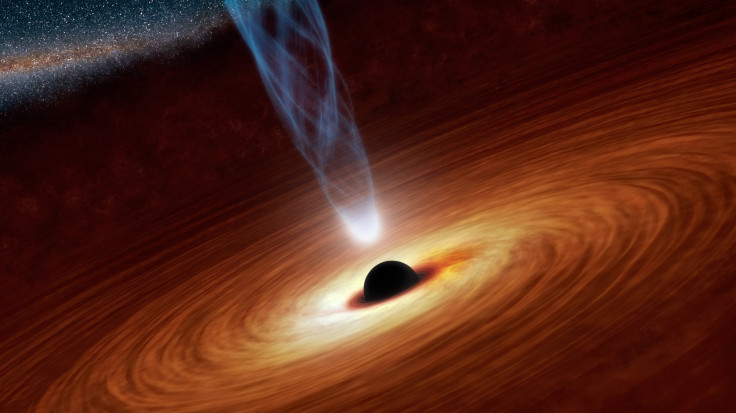Black Hole Information Paradox: Experiments Using Plasma ‘Mirrors’ Could Reveal If Black Holes Really Destroy Information

The universe as we know it is governed by the laws of causal determinism — causes precede effects and not the other way around. If one knows all the forces acting on an atom, or an agglomeration of atoms, at any given instant, it should, in theory, be possible to not only predict how these entities would behave in the future, but also all their past states.
The laws of quantum physics tell us that everything in the universe is encoded with information about its constituent particles’ quantum states. You take a book, you burn it up, and the information contained in it disappears in practice, but in principle — for causal determinism to remain inviolable — this information should never entirely disappear.
Black holes, however, muck things up a bit.
These objects — sometimes described as the “vacuum cleaners” of the universe — are bodies that warp space-time to such an extent that nothing, not even light, can escape once it passes the “event horizon,” or the edge of the black hole. As the British cosmologist Stephen Hawking discovered back in the 1970s, black holes eventually "evaporate" — an event that leads to the complete and utter loss of “information,” or all the physical attributes, of what they’ve gobbled up.
This, for reasons described above, makes physicists extremely uncomfortable. The puzzle, also known as the information paradox, has long stumped scientists, and is indicative of something being amiss with our understanding of reality and how the universe works.
One possible resolution to this paradox is that the information is preserved through entangled photons. Proponents of this hypothesis state that due to quantum entanglement, wherein two particles can be separated by billions of light-years and yet be instantly affected by changes to the quantum state of the other, information is preserved even when the original photon is destroyed.
Obviously, this explanation is only a hypothesis, as it is — for now, at least — impossible to study real black holes up close. The alternative is to use black hole analogues created in labs on Earth and mathematically mimic conditions that we believe exist in the vicinity of black holes out there in space.
Now, in a study published Monday in the journal Physical Review Letters, Pisin Chen from National Taiwan University in Taipei, China, and Gerard Mourou from the École Polytechnique in Palaiseau, France, have described a way to test ideas that seek to resolve the information paradox. Their technique involves using an accelerated plasma “mirror” that they say can be made by shooting intense pulses of laser into plasma — which is basically a cloud of ionized gas.
Doing so, the researchers argue, would leave behind a wake of electrons that would then behave like a moving mirror for photons that emerge due to quantum fluctuations. The reflected photons can be likened to the thermal radiation — or Hawking radiation — that is emitted by black holes, while the unreflected particles would be their partners abandoned at the reflective surface’s boundary — ones that are released as intense bursts of energy when the mirror stops moving.
“To date, the investigations have remained mostly theoretical since it is almost impossible to settle this paradox through direct astrophysical black hole observations,” the researchers wrote in the study. “Here, we point out that relativistic plasma mirrors can be accelerated drastically and stopped abruptly by impinging intense x-ray pulses on solid plasma targets with a density gradient.”
© Copyright IBTimes 2025. All rights reserved.






















